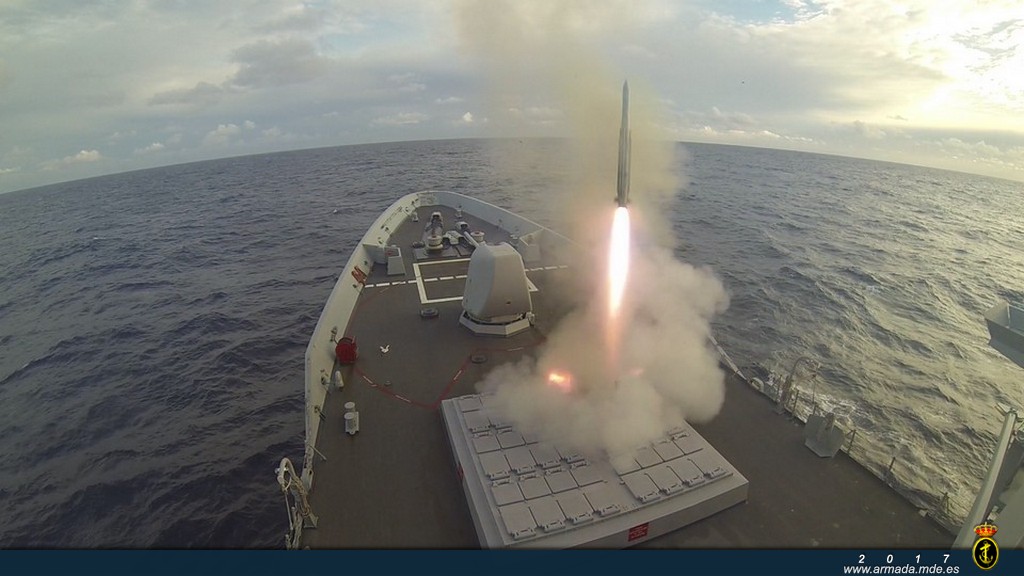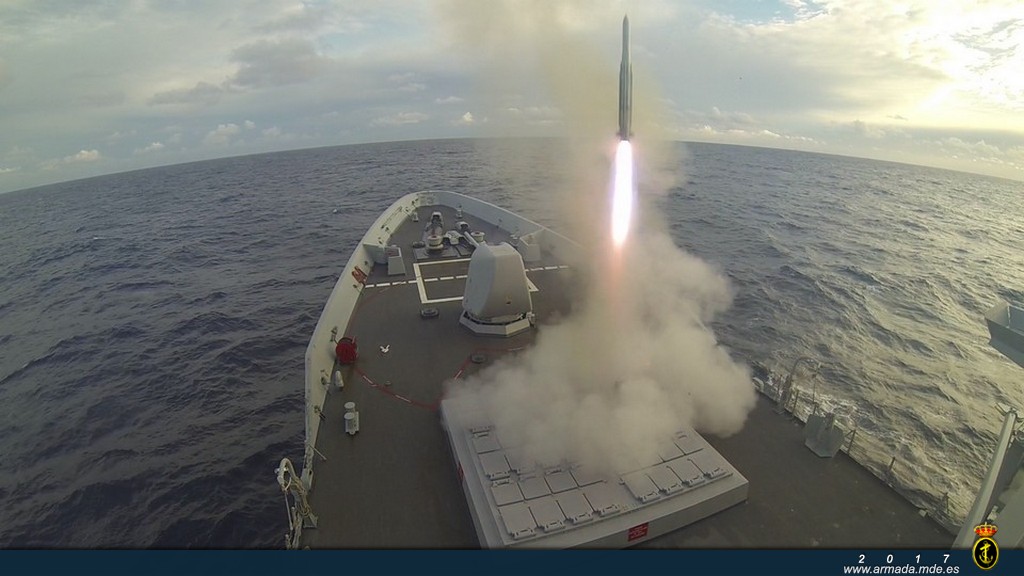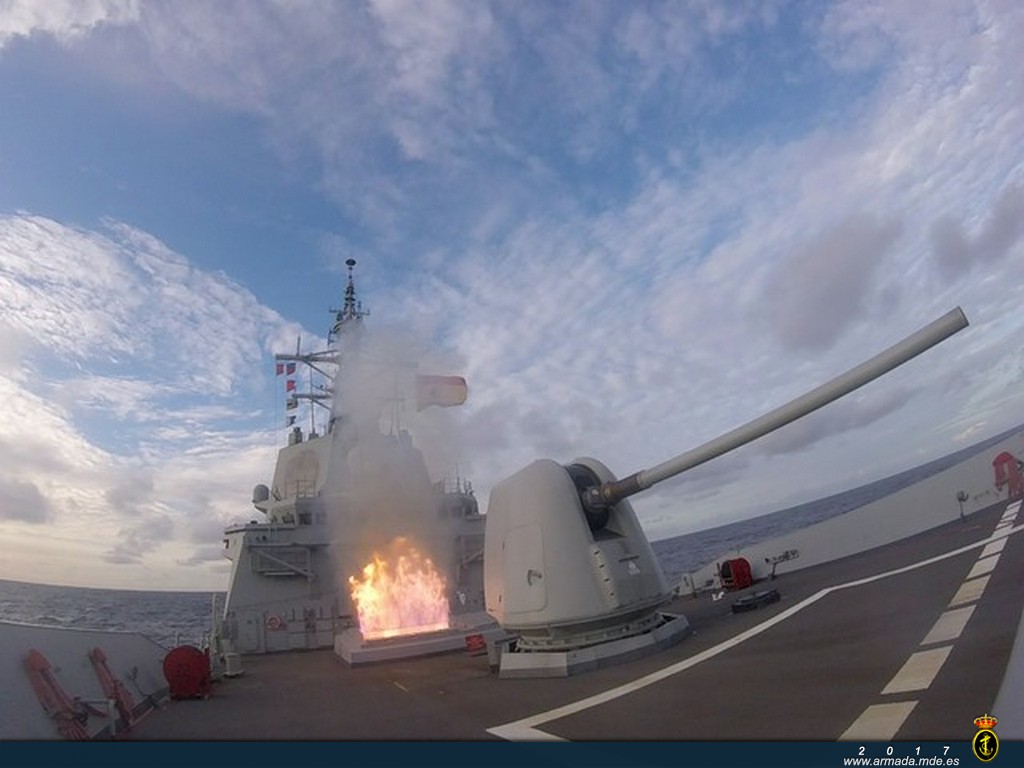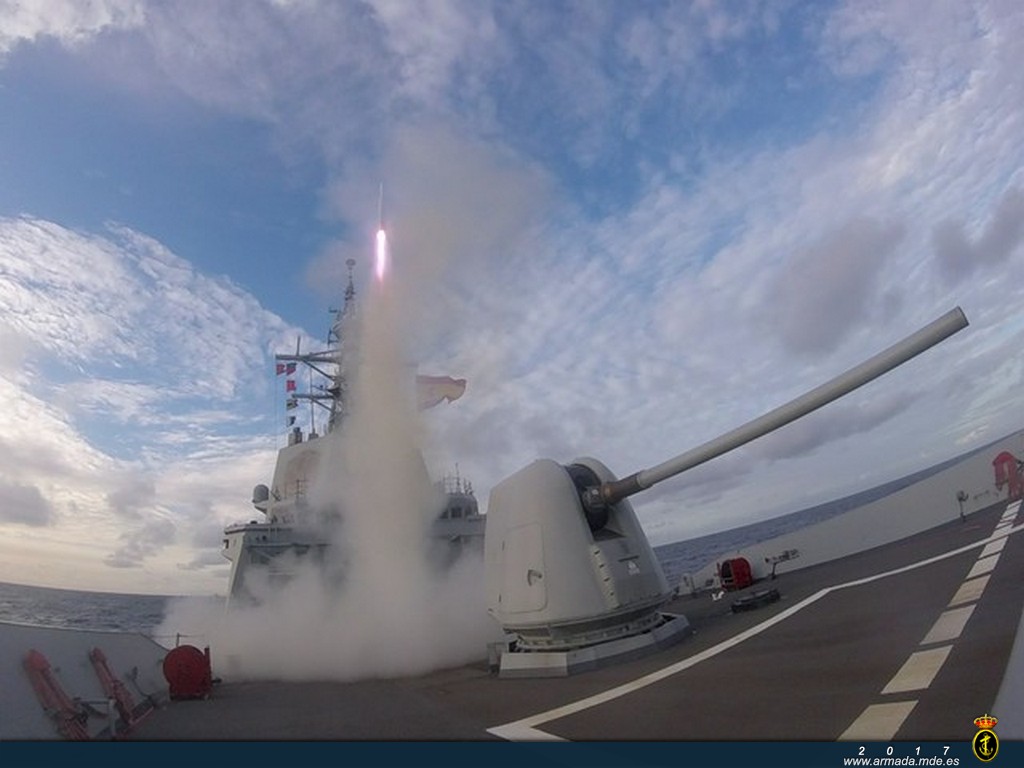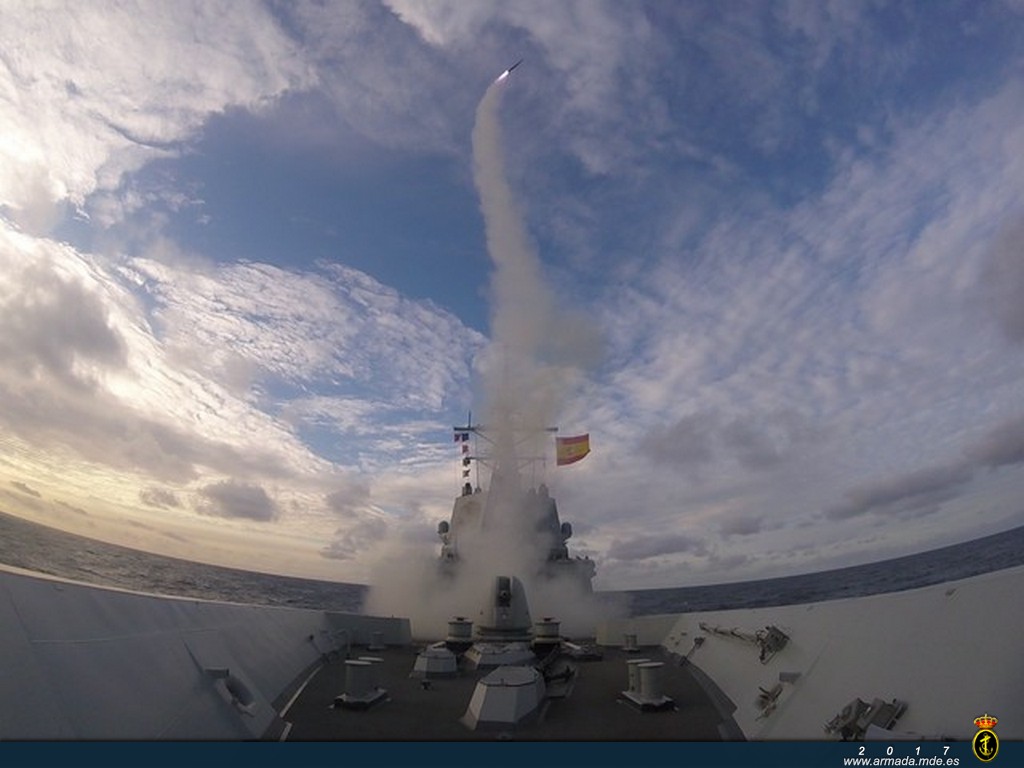F-100 frigate ‘Álvaro de Bazán’ wraps up her participation in Exercise ‘Formidable Shield 17’
Tuesday, October 17, 2017
The F-100 frigate ‘Álvaro de Bazán’ has participated in Exercise ‘Formidable Shield 17’ conducted in Scottish waters near the Hebrides and integrated into a multinational force along with other seven Allied nations: United States, Canada, United Kingdom, Italy, the Netherlands, Germany and France.
The purpose of ‘Formidable Shield’ was to improve Allied interoperability in a live-fire integrated air and missile defense (IAMD) environment, using NATO’s command and control reporting structures.
The contribution of the Spanish Navy is possible thanks to the BMD capability of the AEGIS-equipped F-100 frigates. They can detect and track ballistic missiles flying out of the atmosphere, transferring data to other warships for subsequent engagement and destruction of the incoming missile. The Spanish Navy is one of the few Naval Forces with BMD capability in Europe.
In this way, Spain shows its commitment with NATO’s anti-air and anti-missile programs, including ballistic missiles. This BMD frigate can detect the threats with her interoperable command and control systems, transferring the information for ensuing engagement thanks to the AEGIS combat system, a strategic contribution of paramount importance for the Alliance.
In this naval exercise, allied forces in Europe employed for the first time procedures to defend against incoming ballistic missiles with no prior warning, implementing the Smart Defense concept including air defense warships protecting BMD units.
A series of drills were organized intended to contribute to NATO’s ballistic missile defense (BMD) system in a complex scenario, while also training in conventional air defense.
The exercise commenced on September 25th completing all three stages in which the Spanish frigate successfully contributed with her active BMD capability.
In the first two drills, the ‘Álvaro de Bazán’ was able to detect and track a short and medium range ballistic missile flying out of the atmosphere, transferring the data to other ships. This capability is also known as LRST (Long Range Search and Track).
On Sunday, during the third and final series of drills, the Spanish frigate launched an Evolved Sea Sparrow missile (ESSM) against a high speed, cruise target simulating an attack against a BMD U.S. Navy destroyer.
The frigate will return to her home port in Ferrol by the end of the month ready for the programmed operational qualification trials scheduled for November.
Frigate ‘Álvaro de Bazán’ (F-101)
Frigate ‘Álvaro de Bazán’ is the fourth ship with that name in the history of the Spanish Navy. The first one was a three-mast steamer (1841 – 1873); the second was a similar warship (1873 – 1885) and the third one was a gunboat serving from 1904 to 1926.
The standard complement of the F-101 is made up of 180 men and women. This number can be increased with further personnel depending on the mission entrusted.
The ‘Álvaro de Bazán’ belongs to the 31st Escort Squadron. With these state-of-the-art warships with strong capabilities the Spanish Navy decisively contributes to the objectives of National Defense.




 + 5
+ 5
